The Virginia Society has eight flags. They are:
| The Flag of the United States. |  |
| The Flag of the Commonwealth of Virginia (Adopted May 1776. Designed by a committee headed by Chancellor George Wythe.) | 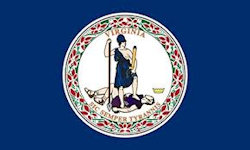 |
| The Red Ensign, proclaimed by Queen Anne (1665-1714) of Britain be the official flag of the British navy and Britain’s overseas colonies, therefore the British flag flown in the American colonies. Early images of Virginia’s Colonial Capitol in Williamsburg show a faint image of a flag, believed to be the Red Ensign, flying over the Capitol. | 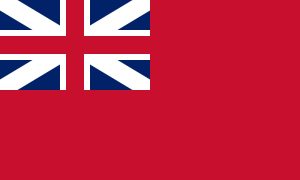 |
| The Flag of the Society of Colonial Wars. (The Cross of St. George with the Colonial War Seal of Virginia (displayed at right). In 1707 “Quartam” replaced “Quintum.”) | 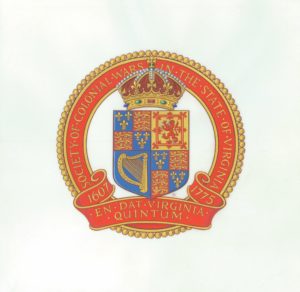 |
| The Cross of Saint George – The flag under which Virginia was settled and background for the flag of the General Society. With the adoption of this flag as the background of the Society Color, question has been removed of the preeminence of Jamestown over Plymouth Rock. | 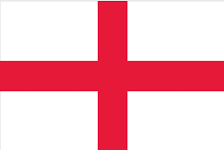 |
| The British Union – The flag first flown in 1606 and the result of merger of the flags of St. George (England) and of St. Andrew (Scotland). This is commonly known as the first “Union Jack.” |  |
| The Colors of the 44th Foot Regiment (British).* | 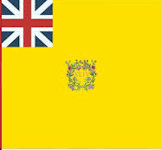 |
| The Colors of the 48th Foot Regiment (British)*. | 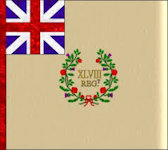 |
*Contrary to data published elsewhere, these English regiments were brought to Virginia from Ireland, landing at Hampton in March 1755. An earlier effort had been made to bring them up to strength after extended tours in Northern Ireland. These efforts were unsuccessful, however, and the units were moved to Alexandria and there ordered to recruit to bring their strengths to 800. Recruiting efforts were not what was desired and a “draught” was used, for one of the first times in Virginia, to bring in the required number of men. In addition, Virginia had the year before been ordered to deactivate its regiments and maintain individual companies only. Six of these companies were called up and were attached to the two regiments as follows:
To the 44th were attached companies of Stephen, LePeyroney and Cocke.
To the 48th were attached the companies of Weggener, Hog (Hogge) and Poison.
The display of these flags does not commemorate the valor of the two regiments during Braddock’s Defeat, but rather commemorates the valor of the Virginians attached to them who, under Colonel Washington, their former regimental commander and at the time an aide to General Braddock, saved the British from total annihilation at the Battle of the Monongahela on July 9, 1755 by their courage and ability to fight and win in the woods.
The British National and Regimental Colors were presented to the Society by the late Honorable W. Brydon Tennant. The Society Flag was presented in honor of the late Herbert Worth Jackson, Jr., Governor of the Society 1946-48, by his many friends.
